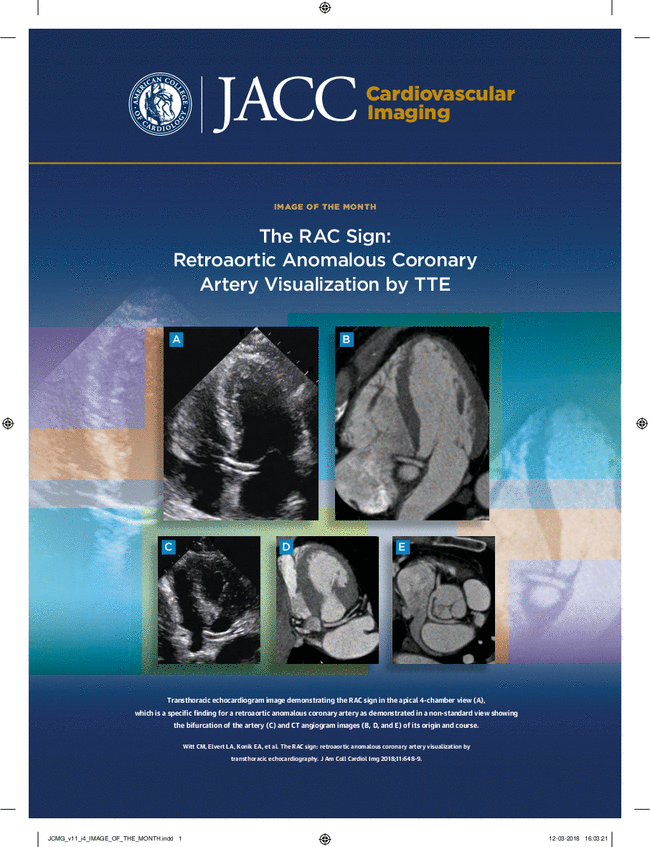颈动脉斑块-RADS 比狭窄程度对中风风险的增量预后价值。
IF 15.2
1区 医学
Q1 CARDIAC & CARDIOVASCULAR SYSTEMS
引用次数: 0
摘要
背景:最近,一种被称为颈动脉斑块-RADS(报告和数据系统)的颈动脉粥样硬化斑块标准化分类系统问世。然而,除了传统的狭窄程度评估外,该系统改善卒中风险分层的能力尚未得到广泛探讨:本研究旨在确定颈动脉斑块-RADS 比狭窄程度对卒中风险的增量预后价值:该研究对 2010 年 1 月至 2021 年 12 月期间的数据进行了回顾性分析,涉及接受颈动脉磁共振成像、计算机断层扫描血管造影和超声评估的受试者。采用卡普兰-梅耶尔和净再分类改进公式,比较了不同狭窄程度、颈动脉斑块-RADS类别及其组合的无病生存率(DFS)和无复发生存率(RFS):研究共纳入 1,378 名受试者。在 57 ± 25 个月的随访期间,987 名无症状者中有 4.6% 首次中风,391 名有中风史者中有 16.9% 再次中风。轻度/中度狭窄和重度狭窄受试者的 DFS 和 RFS 率存在显著差异(P 结论:轻度/中度狭窄和重度狭窄受试者的 DFS 和 RFS 率均高于轻度/中度狭窄受试者):与传统的狭窄分级相比,颈动脉斑块-RADS 能显著改善卒中风险分层,尤其是在轻度/中度狭窄病例中。本文章由计算机程序翻译,如有差异,请以英文原文为准。
Incremental Prognostic Value of Carotid Plaque–RADS Over Stenosis Degree in Relation to Stroke Risk
Background
Recently, a standardized classification system for carotid atherosclerotic plaques, known as Carotid Plaque–RADS (Reporting and Data System), has been introduced. However, its capacity to improve stroke risk stratification beyond traditional stenosis degree assessment has not been extensively explored.
Objectives
This study aimed to determine the incremental prognostic value of Carotid Plaque–RADS over stenosis degree for stroke risk.
Methods
A retrospective analysis was performed on data from January 2010 to December 2021, involving subjects who underwent magnetic resonance imaging, computed tomography angiography, and ultrasound evaluations of the carotid artery. Disease-free survival (DFS) and recurrence-free survival (RFS) rates were compared across different stenosis degrees, Carotid Plaque–RADS categories, and their combination, using the Kaplan-Meier and net reclassification improvement formula.
Results
The study enrolled 1,378 subjects. During a follow-up period of 57 ± 25 months, 4.6% of 987 asymptomatic individuals and 16.9% of 391 subjects with stroke history experienced initial and recurrent strokes, respectively. Significant differences in DFS and RFS rates were found between subjects with mild/moderate and severe stenosis (P < 0.001). Significant differences in DFS rates were observed across Carotid Plaque–RADS categories (P < 0.001), with a notable decrease in DFS rates as Carotid Plaque–RADS categories increased from 1 to 4. This trend was similar in subjects with a history of stroke (P < 0.001). For patients with mild/moderate stenosis, significant differences in DFS and RFS rates were found between those with Carotid Plaque–RADS of ≥3 vs <3 (P < 0.001). Correct reclassification was achieved for 3.3% (32 of 979) of asymptomatic individuals and 9.7% (37 of 381) of subjects with a stroke history initially identified with mild/moderate stenosis. Incorporating Carotid Plaque–RADS with stenosis grading markedly improved risk assessment, resulting in net reclassification improvement of 63.8% for initial stroke and 47.8% for recurrent stroke prediction. The likelihood ratio test demonstrated that Carotid Plaque–RADS scores significantly enhanced the prognostic accuracy of stenosis degrees for both asymptomatic individuals and patients with a history of stroke (both P < 0.001).
Conclusions
Carotid Plaque–RADS significantly improves stroke risk stratification over traditional stenosis grading, especially in mild/moderate stenosis cases.
求助全文
通过发布文献求助,成功后即可免费获取论文全文。
去求助
来源期刊

JACC. Cardiovascular imaging
CARDIAC & CARDIOVASCULAR SYSTEMS-RADIOLOGY, NUCLEAR MEDICINE & MEDICAL IMAGING
CiteScore
24.90
自引率
5.70%
发文量
330
审稿时长
4-8 weeks
期刊介绍:
JACC: Cardiovascular Imaging, part of the prestigious Journal of the American College of Cardiology (JACC) family, offers readers a comprehensive perspective on all aspects of cardiovascular imaging. This specialist journal covers original clinical research on both non-invasive and invasive imaging techniques, including echocardiography, CT, CMR, nuclear, optical imaging, and cine-angiography.
JACC. Cardiovascular imaging highlights advances in basic science and molecular imaging that are expected to significantly impact clinical practice in the next decade. This influence encompasses improvements in diagnostic performance, enhanced understanding of the pathogenetic basis of diseases, and advancements in therapy.
In addition to cutting-edge research,the content of JACC: Cardiovascular Imaging emphasizes practical aspects for the practicing cardiologist, including advocacy and practice management.The journal also features state-of-the-art reviews, ensuring a well-rounded and insightful resource for professionals in the field of cardiovascular imaging.
 求助内容:
求助内容: 应助结果提醒方式:
应助结果提醒方式:


